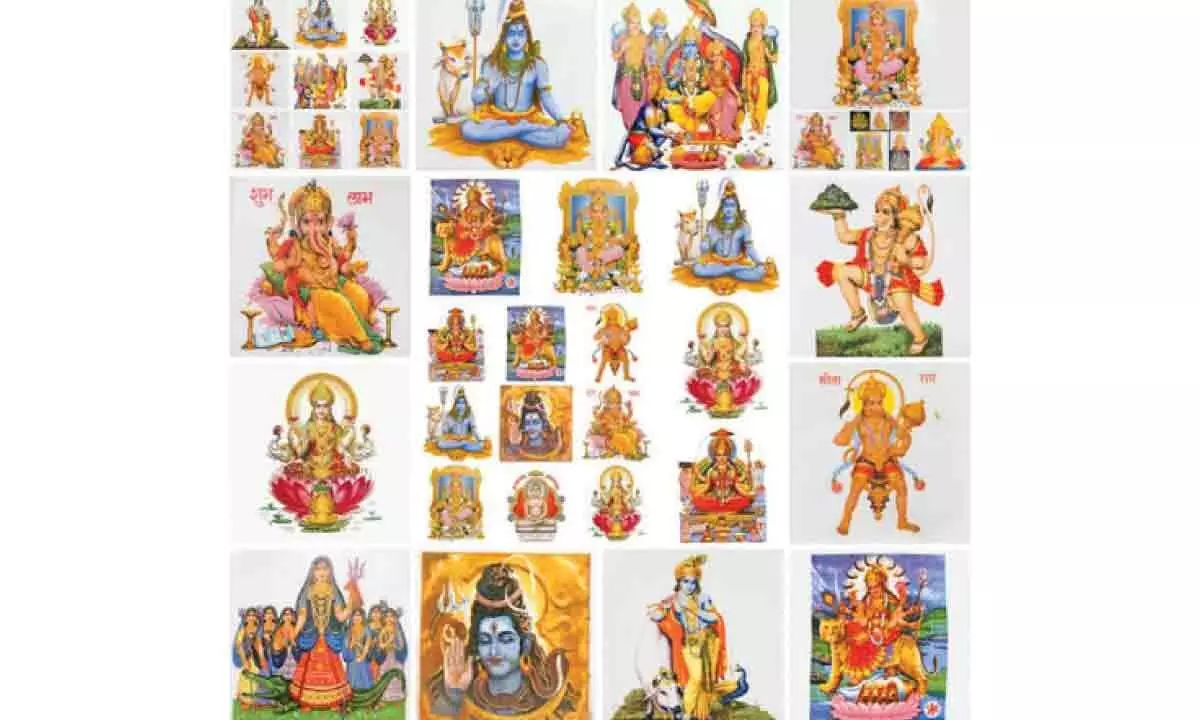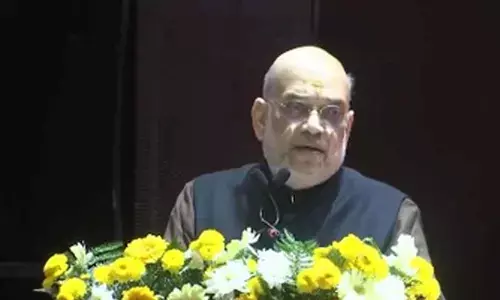Visualising the Supreme

The Indian tradition never condemns idols. We are not worshipping the idol (stone or wood) as such. No one is so foolish. We worship the idea of God in the idol. But it is a preliminary step, we should remember, and we are asked to transcend that stage to realise our oneness with the Supreme
A unique feature of Indian thought is that it does not ask us to believe in anything. It asks us to investigate the nature of Reality by ourselves. Traditions have given some models which were thought of by our predecessors so that we need not tax our brains afresh. As people are at different levels of maturity, they accept a model according to their level of understanding. These are for lay people, in order to keep them on an ethical path.
Traditions visualised God as having the functions of creation, sustenance, and destruction. Such a god has to be all-powerful and all-knowing. Hence, they visualised a person seated high above in the sky. His place has to be better than the place we live, and our aim should be to reach that place and be there forever. Thus, they identified a location and perhaps a form for that person. They also visualised a form for such a person. This is how we see throughout the world, the depiction of such gods in various forms, in paintings, sculptures and so on.
When the sages contemplated the realities of creation, they came up with some revelations, and they described them in what are known as mantras. The highest reality, called Brahman, and which is of the nature of pure consciousness, there cannot be any form. That is why there cannot be any form for OM. But when we visualise a god who creates and administers, we tend to visualise a form and name and some characteristics.
These forms are not visualised in a haphazard way, but they have a logic behind them. For instance, when it is said that lord Shiva is digambara, which literally means a person for whom all directions (dik) are clothes (ambara), we should not take the normal meaning that he wanders in nude. It means that he is infinite in nature and hence all directions are his clothes. The farther we go the farther is his presence. In contrast, he is said to move on a bull, where the bull symbolises dharma. His trident represents the three gunas – sattva, rajas and tamas. When it is said that he burnt Manmatha, the god of love, by opening his third eye, we should not think that flames beam out from his eye. The third eye is symbolic of knowledge and knowledge burns all desires. He is not a person; he is a concept. Where should we find such Shiva? We have to find him in our own hearts.
Similarly, we find the symbolism in Vishnu of Shakti and others. The word Vishnu means ‘all-pervading’, the same as digambara, which is the name of Shiva. His four hands symbolise that he bestows the four human goals – dharma, Artha (prosperity), kama (fulfillment of desires) and moksha (liberation). Vaikuntha is a state of mind where there is no want, no frailty (kuntha), no fear and which symbolises fullness. The sudarshana chakra in the hand of Vishnu means (su-right, darshana-knowledge) right knowledge, which destroys ignorance, represented by demons, the evil tendencies in us.
When the sages captured the characteristics of a deity in a mantra, it was meant for contemplation. The seeker has to concentrate his mind on the meaning of the mantra and contemplate. The human mind easily follows symbols and hence the mantra came to be depicted in the form of a yantra, a pictorial representation. Figuratively, we can say that mantra was the first temple for God and thereafter it evolved into the present shape. Over a period, a small replica came to be used to concentrate one’s mind on the nature of the deity. Thus, the idea of God became the idol of God.
Though Vedanta repeatedly reminds a seeker to go beyond the idol and discover the nature of reality, it is seldom done, as we are engrossed in our worldly pursuits. We are content with the gods and their miracles. Hence, the Indian tradition never condemns idols. We are not worshipping the idol (stone or wood) as such. No one is so foolish. We worship the idea of God in the idol. But it is a preliminary step, we should remember, and we are asked to transcend that stage to realise our oneness with the Supreme.
(The writer is a former DGP, Andhra Pradesh)
















